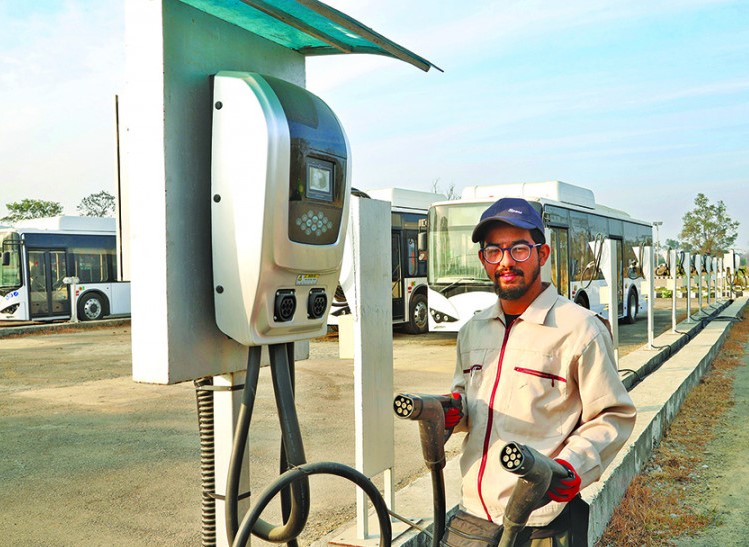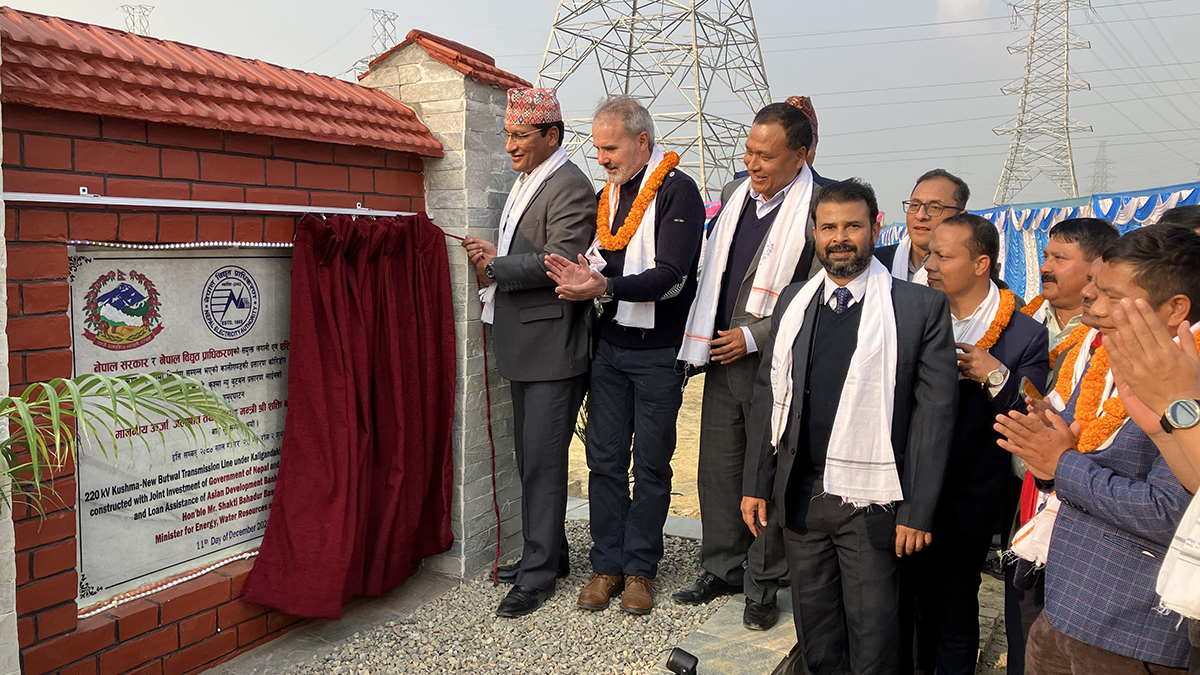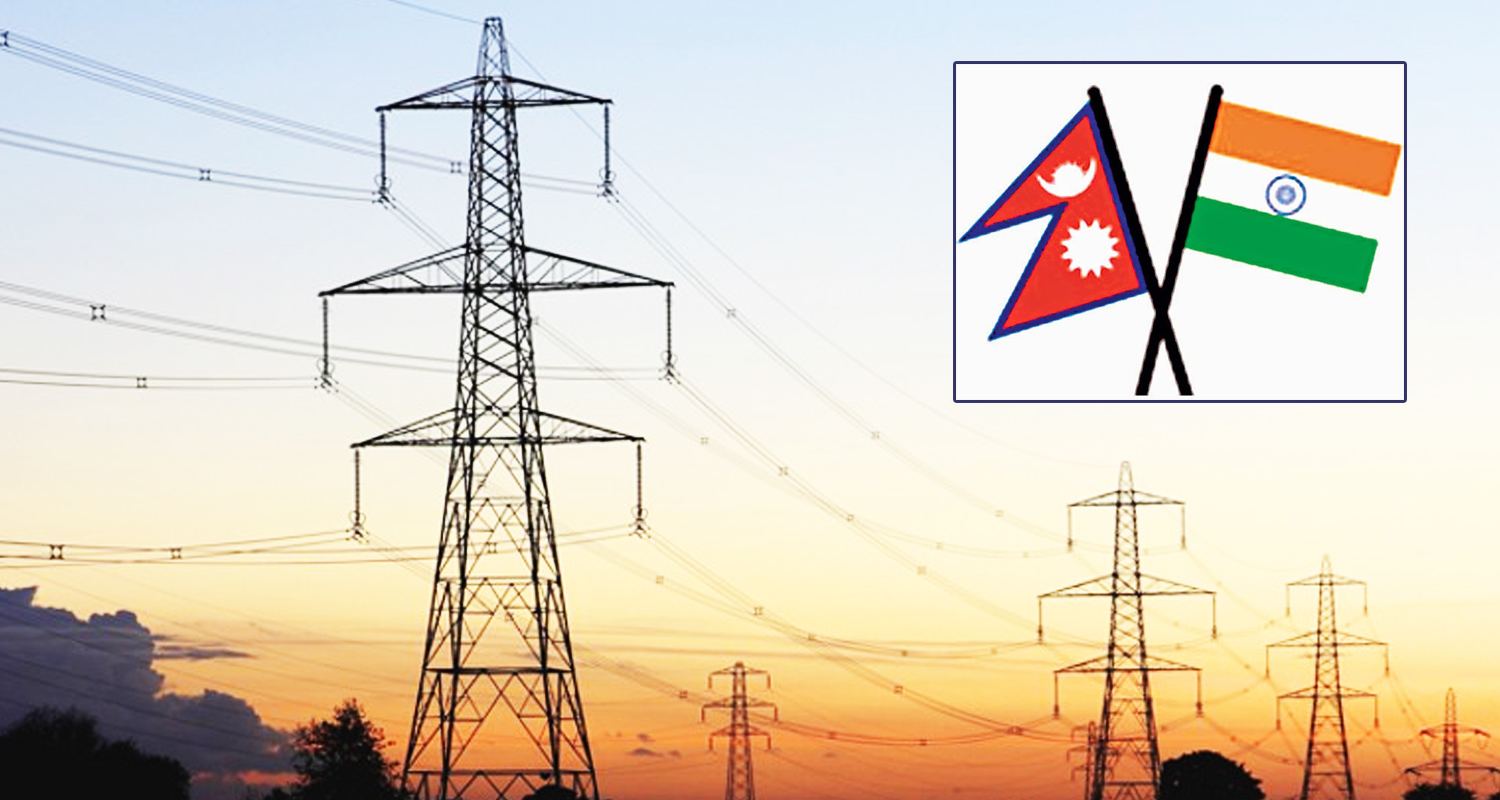Energy Update
Nepal’s first electric vehicle charging station opens

Nepal’s first electric vehicle charging station has opened in Lumbini, and battery-powered rickshaws used for local sightseeing have become the first to use it.
The station is powered by solar panels and completed a successful trial run on Monday. Braving the Covid-19 pandemic, a team of four Japanese technicians worked continuously for months to make the project possible, according to the project.

"The testing and commissioning has been completed successfully," said Tadoyoshi Okasawara, managing director of Isaka Electric Company of Japan. The charging station has been handed over to the Lumbini Development Trust, which oversees the development of Lumbini and adjacent sites associated with the life of the Buddha.
Chiranjeevi Thapa, Nepali partner of Isaka Electric Company of Japan, handed over the charging station to Sanuraja Shakya, member-secretary of the trust.

A power house has been constructed near the International Assembly Hall and the Meditation Centre. There is a control room (electrical building) near the powerhouse in an area that is 160 metres wide and 80 metres long.
An underground wire has been laid to provide electricity connection between the powerhouse and the building equipment. The control room houses two 50-50 kV inverters of Nichikon Company of Japan and 60 Korean lithium batteries.
The batteries have a storage capacity of 360 kW per hour. The direct current electricity produced by the solar panels is sent to the charging station through a 50-50 kV and 100 kV transformer in the control room.
The charging station is located on the Lumbini-Taulihawa road, and is connected to the powerhouse through a 600-metre-long underground wire.
There are 12 solar panels each made by connecting 44 solar panels, and two large solar panels each made by connecting 32 panels. In total, there are 592 solar panels each with a capacity of 260 watts.
The powerhouse generates 154 kilowatts of electricity, making it the largest solar charging station in Nepal.
The solar panels were imported from Japan, the structural goods from China and the Johnson Box (power control and supply equipment) from Italy.
Kenji Nakau, an electrical engineer at Isaka Electric Company of Japan, said the station was the largest solar energy generator in the country.
"There is a plan to transmit the electricity generated here to the Nepal Electricity Authority if it is not fully consumed," he said, adding that the electricity would be provided free of cost for a year.
After that, an agreement can be signed with the coordination of the Ministry of Energy to sell the electricity, for which purpose, 250 kV transformers have been installed at the station, officials said.
"We have already tested the connection by linking it to the authority’s 11,000-volt grid," Nakau said.
A time of day meter has also been installed. The meter shows the units of electricity transmitted to the utility from the solar station, and the units of electricity received from the utility when the solar station is not producing electricity.
Electrical engineer Sumit Adhikari said the charging station housed 16 vehicle chargers—13 normal chargers that can charge vehicles of 7 kW capacity, and three quick chargers that can charge one bus of 80 kW capacity and two minibuses of 40 kW capacity at the same time. It takes one and a half to two hours to fully charge the vehicles using quick charge.
Charging points for 75 electric rickshaws have been installed at the same place. A vehicle charger has been attached in front of the office of the Lumbini Development Trust.
Nine charging points have also been set up at Gautam Buddha International Airport in Bhairahawa. There is one charger for 80 kW capacity buses and cars, and eight chargers for 40 kW capacity vehicles.
The charging station was constructed under the Clean Energy Project with a grant assistance of the Asian Development Bank. The powerhouse was built by Isaka Electric Company of Japan with the help of the bank. The estimated cost of the charging plant is Rs130 million, but delays and relocation of the charging stations have resulted in cost overruns.
"The construction was delayed for almost a year and a half because work was stopped on orders from the Prime Minister's Office and because of the pandemic," said Bhattarai. Construction work was slated to start in December 2018 and be completed in April 2019.
"The wishes of visitors to travel in an electric bus in Lumbini will be fulfilled now,” Thapa said.
"The charging station is expected to displace gasoline-powered vehicles within three years," said Rajesh Gyawali, member of the Lumbini Development Trust.
“It is a matter of happiness for the people of Lumbini who are crawling towards development," said Fakhruddin Khan, a provincial parliamentary member elected from Lumbini. "It will increase income generation and employment. Efforts should be made for its sustainability as it will help in controlling rising pollution."
The electric buses brought to make Lumbini pollution-free have been lying idle for lack of a charging station. Initially, the Ministry of Tourism refused to take delivery of the buses as per the agreement. The five brand new buses and 14 jeep vans have been parked under the open sky in front of gate number two for more than a year.
Lilamani Sharma, senior vice-president of Lumbini Hotel Association, said that the Lumbini Development Trust was sending a bad message by not operating the vehicles provided to facilitate transportation for domestic and foreign tourists.
The trust had decided to issue a tender for the operation of the vehicles three months ago, but it has not been able to do so yet. The vehicles have been bought at a cost of Rs130 million under the Clean Energy Project with a grant assistance of the Asian Development Bank.
The buses were said to be used to transfer tourists and pilgrims from Gautam Buddha International Airport in Bhairahawa to Lumbini.
The taxis and buses would connect various Buddhist sites like Tilaurakot, Ramgram and Devadaha to facilitate transportation. "The ministry will hand over the vehicles to the Lumbini Development Trust within a day or two," said Bhattarai.
Conversation
- Info. Dept. Reg. No. : 254/073/74
- Telephone : +977-1-5321303
- Email : [email protected]














